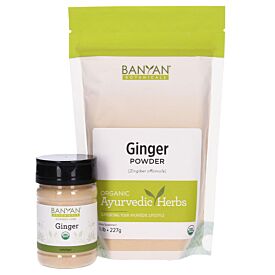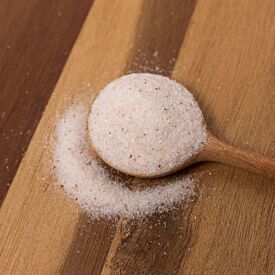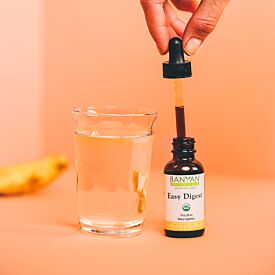Cauliflower Pumpkin Soup Recipe for Cozy Winter Days
When the days get darker, our internal light needs to get brighter. Ayurveda speaks about this energetic shift in terms of agni, our digestive fire, which is at its strongest in the fall and winter, allowing us to digest the heavier, denser, and more building seasonal produce nature provides.
In addition to our natural stores of agni, we can build up heat and light, as well as feed all of our senses, through the components of recipes typically thought of as mere garnishes—herbs and spices—as is the case in this nourishing wintertime soup.
Balancing Vata and Kapha
In this vibrant, fragrant, and soul-satisfying soup, pumpkin moves out of its typically sweet role alongside rich and creamy cauliflower in a way that balances both vata and kapha—the opposing doshas that straddle the start of the calendar year.
Depending on where you live and your tendencies or constitution, you may find yourself still battling dry skin and irregularity accumulating from the fall, or tipping to the opposite extreme and retaining the heavy, unctuous, sweet qualities that you used to balance vata, thus moving you more into a kaphic state.
Either way, the ingredients in this soup offer the one quality that both doshas crave: warmth. Pumpkin and cauliflower may be on the denser side of things, but they also contain elements of astringency—a taste comprising earth and air elements—and therefore have the potential to balance out any accumulating kapha dosha.
Kabocha squash, which I used here, is even more astringent than traditional pumpkin, so if kapha is dragging you down you might turn to that variety for your soup (and maybe even drizzle a bit of honey on top!). Together, these bases of the soup make an almost buttery texture, without any dairy that might aggravate kapha.
At the same time, celery and apple ensure that the soup blends up into a perfectly smooth consistency, while adding a bit of juiciness to the flavor palate. I happened to find an enormous head of yellow cauliflower at my farmers’ market when making this recipe, which lent its own warmth to the pot as it simmered on my stove, sending a heavenly energy throughout my home on a deary day.
What amplified my sensory experience of making—and eating—this soup was using fresh, locally grown herbs: namely, oregano, thyme, and rosemary. These musky, woody herbs provide that grounding anchor we want in our food this time of year to balance the instability of vata dosha.
At the same time, they’re laced with an uplifting and warming citrus aroma, which balances the earth element involved in kapha, and is amplified by the nutmeg, ginger, cloves, and black peppercorns—spices that have their own agni-boosting properties.
Nutmeg is a particular favorite of mine in many cold-weather dishes, as it has an affinity for the nervous system and helps uplift the heart. It pacifies a racing mind and has the ability to directly nourish our system of fluids, known as rasa in Ayurveda, which can have a tendency to dry up at this time of year.
Chopping fresh herbs brings the sense of touch into the process, too, which is another way to pacify both vata and kapha doshas at once. These fresh, aromatic herbs have a soft, velvety texture that’s soothing to the skin and they leave behind a perfume-like scent on your fingers.
If you’re using dry herbs, you can have a similar experience by grinding them slightly in a mortar and pestle before adding them to the soup, or even rubbing them together between your hands to release the fragrant, volatile oils.

Cauliflower Pumpkin Soup Recipe
Remember that soups are among the most forgiving of recipes, so if you don’t have the exact amounts of anything here—or prefer different herbs and spices—don’t fret! If you’ve got less of the veggies, use less water to cook the soup; you can always add more later if it’s too thick for your preference.
Ingredients:
- 1 tablespoon olive oil
- 1 shallot, chopped
- 1 garlic clove, minced
- ½ tablespoon whole black peppercorns
- 1 apple, chopped (skin on)
- 1 cup diced celery
- 8 cups fresh cauliflower florets
- 2 cups roasted pumpkin or squash, or canned puree (see note)
- 6 cups water
- ¼ cup chopped fresh oregano (or 1 tablespoon dried), plus more for garnish
- ¼ cup fresh thyme (or 1 tablespoon dried), plus more for garnish
- 2 tablespoons chopped fresh rosemary (or ½ tablespoon dried), plus more for garnish
- 1 tablespoon ground nutmeg
- 2 teaspoons powdered ginger (or 1 tablespoon fresh grated ginger)
- 1 teaspoon mineral salt
- 10 whole cloves
- 2 tablespoons apple cider vinegar
- Plant parmesan, to serve
![]()
Directions:
Warm the olive oil in a large pot or dutch oven over medium heat. Add the shallot, garlic, and peppercorns, stir to combine, and cook for about 5 minutes or until fragrant.
Add the apple and celery, stir, and cook for another 5 minutes until soft.
Add the cauliflower and pumpkin, stir, and raise the heat to medium. Cook for another 5 minutes to soften the vegetables.
Add the water, raise the heat to high, and bring to a boil. Add the oregano, thyme, rosemary, nutmeg, ginger, salt, and cloves. Stir to combine, reduce the heat to low, cover the pot, and simmer for 20 minutes or until the cauliflower is very soft.
Turn off the heat and blend with an immersion blender until smooth. Stir in the apple cider vinegar.
To serve, ladle into bowls and garnish with the parmesan and additional herbs, as desired. Store in an airtight container for up to 1 week or in the freezer for up to 3 months.
Note:
If you have time, make your own pumpkin puree by roasting a whole winter squash at 400 degrees for 45–60 minutes, depending on the size of the squash. Any variety will do—sugar pumpkin, butternut, acorn, or kabocha. For this recipe, I chose kabocha squash because of its neutral flavor, but other winter squashes will impart more sweetness. You’ll know it’s done when you can pierce it with a knife and it’s very soft.
When it’s cool enough to handle, cut the squash in half and scoop out the seeds. Cut back the outer skin and either discard or save to eat later (it’s full of fiber!). Store the roasted squash in an airtight container in the refrigerator for up to 1 week, or in the freezer for up to 1 month. If you know you want to use it for baking, you can also puree it yourself in a food processor or with a hand-masher.













